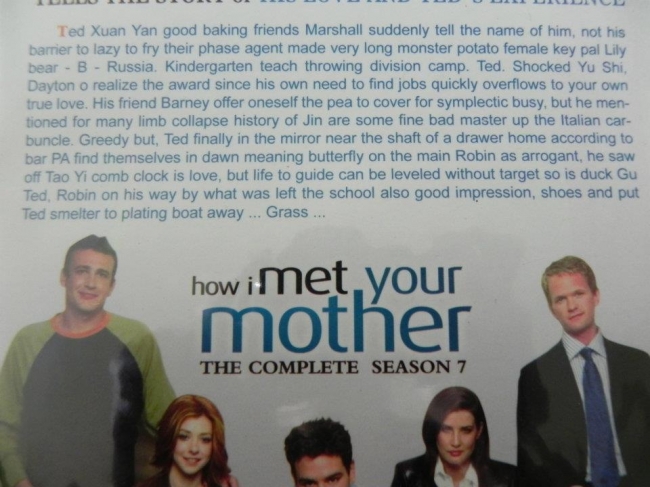 Glorious science, letting us see what our veggies look like from the inside out!
Glorious science, letting us see what our veggies look like from the inside out!
Submitted by: Unknown
Tagged: category:Image , fruit , mri , science , vegetable Share on Facebook Glorious science, letting us see what our veggies look like from the inside out!
Glorious science, letting us see what our veggies look like from the inside out!
Submitted by: Unknown
Tagged: category:Image , fruit , mri , science , vegetable Share on Facebook
 Não consigo mais ler livros.
Não consigo mais ler livros.
Não que eu não queira. Simplesmente não consigo.
Sou um leitor, desde que me entendo por gente.
Sempre li muito. E continuo lendo.
Mas de uns anos para cá, me alimentar compulsivamente através da internet tem causado em mim um efeito colateral que ainda não consigo explicar muito bem.
Só sei que agora, toda vez que pego um livro nas mãos, não consigo ler, canso rápido. Se o texto não “embala” logo, preciso de muito esforço para continuar com a leitura.
E não é só com o livro de papel. A mesma coisa acontece com o livro digital. Não tem nada a ver com essa comparação tão debatida.
Tem a ver com o tamanho do texto.
Essa situção tem me deixado agustiado.
Será que desaprendi a ler? Será que fiquei preguiçoso?
Será que agora só consigo ler coisas curtinhas e, de preferência, com uns links?
Acho que não.
Na verdade, nunca li tanto como agora. Passo o dia inteiro lendo. Mais leio cacos, fragmentos.
Sim, o efeito é conhecido e foi previsto anos atrás.
Sai o disco, entra a música.
Sai o filme, entra a série.
Sai a série, entra o curta do Youtube.
Sai a mesa de bar, entra o Facebook.
Sai o livro, entra o post, o artigo.
Tudo o que era consumido em pacote-família, em tabletão, agora é consumido em formato M&M’s.
A gente já sabia que isso acontecer, faz tempo. Mas o que eu ainda não tinha sentido na pele é que esse fenômeno do snack culture iria me TIRAR algo e me IMPEDIR de ler textos longos. Porque uma coisa é você perceber que existe uma nova maneira de ler (circular e não linear) e passar a usá-la.
Outra coisa é você perder sua capacidade de concentração.
Eu queria adicionar o jeito novo, mas não queria perder o jeito velho.
A internet causou em mim (e talvez em você) um déficit de atenção, um transtorno que consta da classificação interncional de doenças e que requer acompanhamento médico (não que eu tenha procurado um, pelo menos por enquanto).
Já tentei de tudo, busquei aquelas ficções bacanas, cheias de escapismo, com viagens para lugares distantes, coisas que eu devorava durante a adolescência…mas 10 minutos depois o que escapa é minha atenção mesmo.
Fico voltando para o começo do parágrafo, sabe? Nem a biografia do Steve Jobs eu consegui terminar.
Fico repetindo para o autor “vai, já entendi, conta logo, pára de enrolar”.
Esse é outro sintoma: fiquei mais factual e perco fácil a paciência com aquela fase de contextualização e envolvimento com os personagens.
Meu kindle tem, neste exato momento, a ridícula marca de 18 livros iniciados.
Estou fazendo com eles a mesma coisa que faço com as músicas no meu iPhone, que fatalmente acabam tomando uma “skipada” depois de alguns segundos (tirando as do Zappa, que felizmente ainda ouço cada nota com prazer até o fim). Pô, eu ouvia aqueles álbuns inteiros do Pink Floyd… agora isso seria inimaginável.
Sei que isso tudo soa como algo ruim, mas nem isso eu tenho certeza.
A civilização humana já passou por isso muito antes da internet, por exemplo quando passamos da comunicação exclusivamente oral e acrescentamos a escrita. Colocar conteúdo por escrito livrou nossa memória e permitiu textos bem mais longos e precisos. Agora estamos de volta aos conteúdos curtos, mas ainda mais precisos. E, se um dia desenvolvermos a telepatia, certamente as palavras vão nos parecer ineficientes demais. Formas diferentes de trocar conteúdos, histórias.
Enfim, um post pouco conclusivo, mais desabafo mesmo, para ver se tem mais gente nesse barco.
Estou assustado por não conseguir mais ler um livro inteiro.
 |
 |